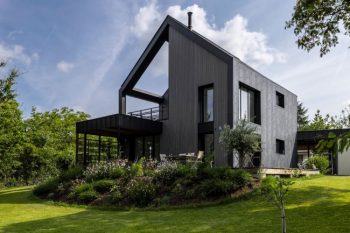
Proteus – When is a green roof really a green roof?
Green roofs demand green membranes if you are really serious about the environment – and this is the challenge for architects and the rest of the roofing industry if they are to respond to London Mayor Sadiq Khan’s plans to turn the capital into the world’s first national park city, according to Justin Pitman, Sales Director for Proteus Waterproofing.
The Mayor’s multi-million-pound initiative offers major opportunities for architects and roofing contractors to create thousands of new blue and green roofs, but more importantly, it also provides the freedom to make each project as environment friendly as possible.
What happens in London is frequently copied by other major cities so it is likely that we will see an increased demand across the country for green roofing and similar environment friendly projects as the Government and local authorities seek to minimise the effects of climate change.
Most members of the general public are only aware of the outward appearance of a green roof. They see the plants, they understand that such applications help protect against flash flooding and assist the environment, but fail for obvious reasons to understand what is at the heart of every project – the waterproof membrane itself.
Those of us in the roofing and construction business know that the membrane is the most critical part of every roof and that particularly applies to green and blue roof projects. Not only does it have to keep the building watertight it also has to offer protection against root damage and must be able to withstand the additional challenges of weight caused by soil, plants, water and much more.
Traditional membranes such as built-up felt systems and liquid solutions have been providing excellent service for green roof applications for decades. Once installed correctly they will continue to remain watertight protected against freeze thaw conditions, UV sunlight and the worst of Britain’s weather by the plants and soil above.
In spite of that, architects and other key specifiers are now looking for membranes that offer the total green solution – and this means that proven bitumen and other chemically based systems no longer tick all of the boxes for some projects. It means that suppliers such as Proteus Waterproofing have had to be more innovative and come up with something a bit different – and that is exactly what we have done.
Our solution is called Pro-Living® and we believe it could be the greenest green roof system ever launched in the UK. It provides major ecological benefits, particularly when combined with our Proteus Cold Melt® membrane.
When specifying or installing a Pro-Living® roof using Proteus’ unique Cold Melt® membrane, specifiers can combine environment friendly materials such as recycled rubber crumb and organically grown products with all that nature can offer. Cold Melt® is also certified by the BBA to last for the life of the building on which it is installed so you get the best of both worlds – strength and sustainability in one system.
Sadiq Khan has already identified that London needs to clean its air and respond to the challenge of flash flooding created by climate change. Cold Melt® ticks both of these boxes and is a proven membrane for green, blue and even brown roofs.
The Mayor’s target to make more than 50 per cent of London green by 2050. As part of this ambition, he will use planning regulations to protect the Green Belt and incorporate into new developments more ‘green roofs.
There are already around 700 green roofs in central London alone, covering an area of over 175,000m2. That’s 17.5 hectares or around 25 football pitches. Sadiq Khan has now unveiled a £9m greener city fund to help improve green spaces for communities, as part of a draft environment strategy for the capital. The funding will help make more than 50% of the capital’s area green by 2050. Overall, 47% of London is currently green space and this is a growing trend in other UK cities.
More green roofs will also help to tackle air pollution and make London a “zero-carbon” city producing a zero net of carbon emissions by 2050. We at Proteus together with the rest of the roofing industry are ready to respond to that challenge.




